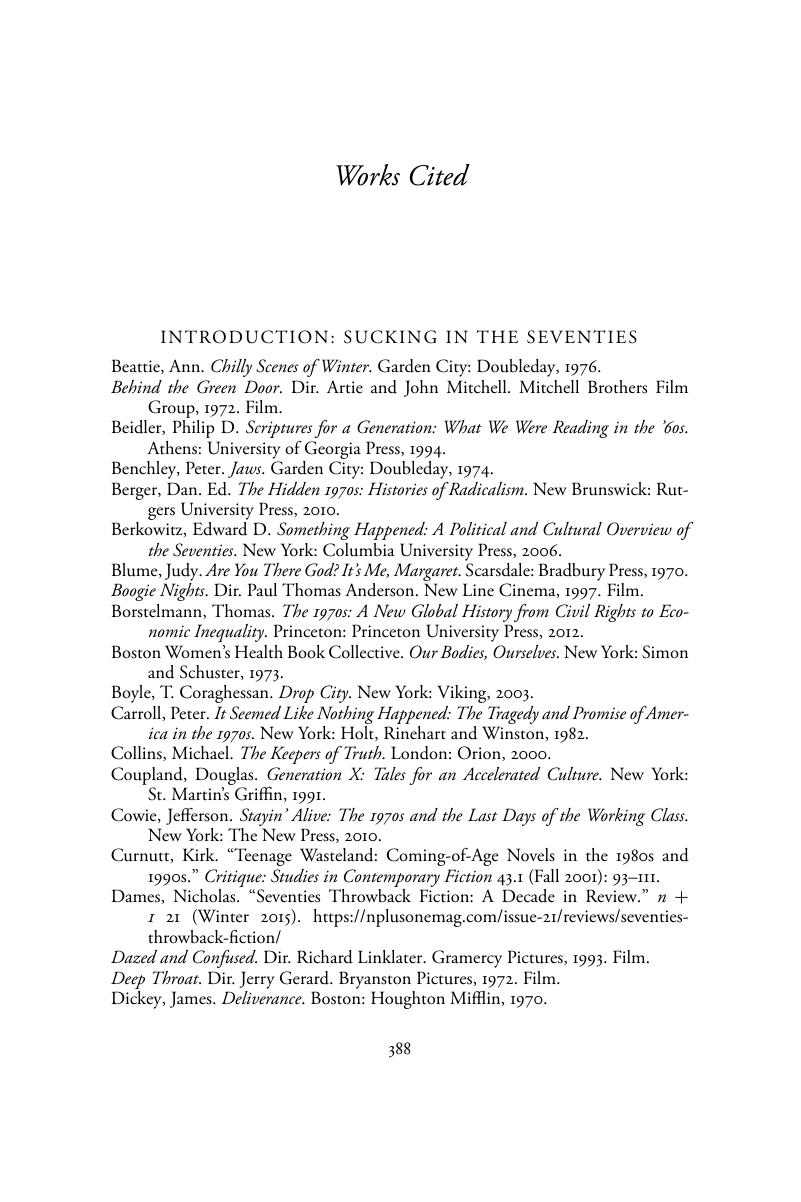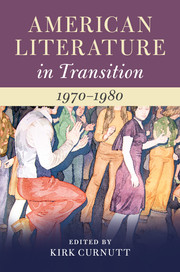Book contents
- American Literature in Transition, 1970–1980
- American Literature in Transition
- American Literature in Transition, 1970–1980
- Copyright page
- Contents
- Illustrations
- Contributors
- Chronology
- Introduction
- Part I Themes
- Part II Genres and the Business of Literature
- Part III Cultural Engagements
- Conclusion
- Works Cited
- Index
- References
Works Cited
Published online by Cambridge University Press: 27 February 2018
- American Literature in Transition, 1970–1980
- American Literature in Transition
- American Literature in Transition, 1970–1980
- Copyright page
- Contents
- Illustrations
- Contributors
- Chronology
- Introduction
- Part I Themes
- Part II Genres and the Business of Literature
- Part III Cultural Engagements
- Conclusion
- Works Cited
- Index
- References
Summary

- Type
- Chapter
- Information
- American Literature in Transition, 1970–1980 , pp. 388 - 439Publisher: Cambridge University PressPrint publication year: 2018



